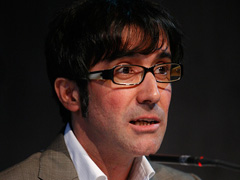For this Catalan geographer, the European city consists of a set of public spaces and these must speak to us in new languages and invite us to think because, in short, these are the spaces which help the citizen to see things differently.
Shared Spaces recorded this conversation with Francesc Muñoz in May 2012 when he visited the Centre of Contemporary Culture of Barcelona (CCCB) as a speaker at the launch of Xavier Monteys’ book El plaer de la ciutat (The Pleasure of the City). Muñoz says that, “the main quality of the city, the one which means that after so many centuries it still remains cogent, and probably the most complex artefact humans have been able to produce, is the fact that it invites you to change your mind”.
This invitation from the city, Muñoz says, is related with public space because this is the space – the agora – where exchanges of views take place, and where it is necessary to improvise owing to the changing urban fabric. In this regard, he comments, “The genome of the European city is one made up of public spaces”. These spaces take many different forms but in the twenty-first century they still continue to be “the leading reference for what we call Europe when we look at it from the standpoint of the city”.
Concluding his comments, he notes that “Public spaces have to speak new languages, make us think about what we’re doing and what we’re not doing, what we have stopped doing and what we will probably do in the future”. This is why he chooses as his favourite public space the Vall d’Hebron Park in Barcelona, a contemporary of the public spaces on the maritime front which were redeveloped for the 1992 Olympic Games.
While the waterfront spaces evoke the past – the nineteenth-century garden city – the Vall d’Hebron Park, “has a radical message nourished by the contemporary city, the metropolis we live in today. […] It has a fluidity which invites one to think of mobility which is almost certainly the fact that best defines urban life at present”.



